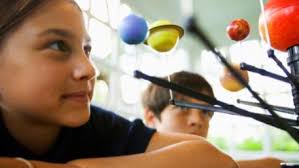The mind is like the monkey- unsettled, hopping, mostly doing acts out of habit rather than reason. However it is expected to perform so as to keep physical self productive and successful in the strife-ridden world. Seems a chasm to wide to be bridged? Let us find the tips and tricks.
Be a better learner
The hows and whys of Integrated learning
Learning to learn refers to the use of a bundle of skills, knowledge, attitudes and values that enables people to take control of and improve learning. Students learn to thus integrate learning by interlinking concepts and experiences that equip themselves with practical problem solving skills.
Through integrated learning students get encouraged to get a clearer concept through creative and critical reasoning. While learning science they present projects by preparing charts or models by the help of art and craft, where maths and geography are also involved. Integrated learning gives the opportunities to explore a wide range of subject disciplines that encourage cognitive links between information and knowledge. In fact, all subjects are interdisciplinary, which can be easily integrated with one another. Thus, integrated learning broadens learners’ thinking skills, fosters divergent thinking, and encourages active participation in real life situations. Albert Einstein had aptly summed it up “I never teach my pupils, I only provide the conditions in which they can learn, as imagination is more important than knowledge, and knowledge is limited but imagination encircles the world”.
Real life situations at work gives you the preconditions for learning
“Give the pupils something to do, not something to learn; and the doing is of such a nature as to demand thinking; learning naturally results.”, said John Dewey.The only source of knowledge is experience but ironically we do not learn from experience; we learn from reflecting on experience. It is always more productive and constructive when we have the scope to think and learn through real life experience rather than sitting for hours, working over notes and study materials. In fact a study by NASA has showed that the number of divergent and creative thinkers dropped from 98% in preschool to a miserly 2% by the time the same group attained the age of 25. Brain learns best when subjects are integrated, helping learners retain the joy of learning.
Metacognition
Thinking about thinking, also known as Metacognition, helps passive learners develop their problem solving techniques, rather than learning the solution to certain problems. We must think before we learn, as thinking is essential for learning. Critical thinking incorporates reasoning, logical judgement, metacognition, reflection and mental process in the course of learning. Learning naturally becomes active when critical thinking is involved in the process.
The human brain has evolved to conserve mental energy whenever and wherever possible. For this reason students often choose learning strategies that require less effort such as re-reading and highlighting. More the cognitive effort students expand on their task, more likely is their learning to improve. Soon it leads to rational thinking, when thoughts come with reason rather than emotion.
Knowledge, experiences and control strategies are the three basic aspects associated with Metacognition. Breaking these aspects down into simpler form they essentially are, what we know, what works for us and what can be done better. Studies have shown that writing down notes improves memory retention and can build habits of self – reflection and personal analysis that can help us notice patterns of thought and behavior we address. For improved learning and more attention span, one needs to calm one’s mind; and this is where meditation does wonders.
These are essential learning skills of the 21st Century, cumulatively termed as Higher Order Thinking Skills or HOTS. Application of HOTS enables learners analyze and remember complex data, categorize, manipulate and connect facts, troubleshoot solutions and understand concepts. All of these help in developing problem solving skills and insightful reasoning. Higher order thinking skills go beyond just memorizing information. One can develop HOTS when connects new concepts with pre-existing concepts he is familiar with. For example, connecting the concept of deforestation with urbanization. This apart, one first needs to process and analyze information rather than trying to learn it.
HOTS requires more time and effort than rote learning. Though these skills are mostly required in colleges and higher education, it is best to try and develop them at a young age to enjoy the long term benefits for the rest of one’s life.
About the authors
The article has been contributed by the following students from Our Lady Queen of the Missions, Park Circus, Kolkata: Anushka Arora, Trisha Isaac, Niharika Dutta and Sarah Ziauddin.

